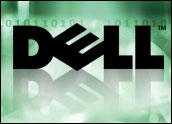
Not surprisingly, most folks see CES as a watershed event for tracking the latest in current, emerging and future consumer electronics trends. So why did I travel to CES 2010 in search of products related to business IT? Pure contrariness is one reply, but let’s also toss in the common, if sometimes subtle, linkages between consumer and business IT.
Personal computing had established a firm foothold among consumers before PCs migrated into businesses — often through the side door, carried by consumers who thought desktop computing could improve their jobs.
Over time, the adoption of PCs by businesses, along with application and computerized process development, arguably led to greater evolution in the workplace than in people’s homes. The same can be said regarding a host of other technology products, including notebook PCs and smartphones, as well as wired and wireless Internet/network infrastructures.
So, did I see trends, technologies and solutions at CES 2010 that could have implications for businesses and their employees? Yes, along with a few that were filled with enough hot air to float away in the Las Vegas sunshine.
Following are a few worth discussing.
Tablet Mania
Let’s start off with the most talked-about non-product leading up to the event: Apple’s mythical tablet. Apple’s ability to dominate public tech discussions by remaining silent is eerily impressive, but that did not mean other tablet proponents didn’t crowd the CES showroom floor.
Many leading vendors displayed prototype solutions (Dell’s Android-based Mini 3 smartphone and tablet were especially impressive), and related technologies like Qualcomm’s Mirasol display and Nvidia’s Tegra processorportend a bright future for these products.
These are critical developments for businesses — the sole market where tablet technologies have gained much traction. Despite the hoopla surrounding Apple, it’s way too early to tell whether tablets will finally cross into wide consumer use. In fact, given the quality of many of the new and planned tablets, I believe it is a gross mistake to automatically cede so nascent a market to any vendor. All things considered, I expect current and emerging developments in this area to significantly, beneficially impact business-focused solutions.
Everyone’s Talking Touchscreens
This was a heavily promoted technology in the weeks leading up to CES, but the hype may be greater than the hope, especially in consumer applications.
That said, touchscreen solutions, including PCs, offer a range of intriguing business use cases. One solution, HP’s TouchSmart 9100, is being adopted by a growing list of ISVs as a platform for retail, food services, hospitality and travel, and healthcare applications. Over time, I expect more HP partners and business clients to adopt this innovative and visually striking solution.
Fujitsu has long delivered multitouch screen capabilities for some of its LifeBook notebook PCs for use in mobile applications (like sales and supply chain) and in workplaces such as medical offices, HMOs and hospitals.
At CES, the company introduced the slick new, ultramobile LifeBook UH900, which offers features including Windows 7 and a 5.6-inch color touchscreen for mobility-obsessed road warriors.
Workload-Appropriate Computing
This concept reflects the increasing adoption of unconventional products (like netbooks) whose performance, though significantly different than traditional notebooks and PCs, is designed for particular applications and processes.
Next gen-netbooks were all over the place at CES 2010, with Toshiba’s new NB305 displaying a particularly admirable combination of form and function. However, some other new technologies proved that the notion of tailoring system performance for specific applications also has implications at the higher end. An example: Intel’s new Core i3, i5 and i7 processors, which leverage the company’s TurboBoost technology to good effect.
TurboBoost allows a system to automatically detect the launch of workload-intensive programs (say, for photo or media processing) and increase the chip’s clock speed to improve performance by up to 2X-3X for some applications. Many businesses could benefit from solutions based on this technology in areas like product design where Intel Core processors offer a useful way to boost conventional PC and notebook performance to near-workstation levels.
3-D Hype
Every convention needs a gimmick and 3-D seemed to be the go-to gimmick of CES 2010, along with the requisite 3-D eyewear. Much of the buzz was designed to ride the success of James Cameron’s new “Avatar,” which uses 3-D to good effect. So, everyone from gaming companies to display manufacturers were hyping the future of 3D-enabled technologies.
With dozens of other Hollywood blockbuster 3-D extravaganzas supposedly in the works, the time seems right for 3-D to make the jump into consumer and business prime time. Right? I doubt it. Why? Consider the historical context: Hollywood originally embraced 3-D in the 1950s to help stave off the perceived threat from televised entertainment. However, beyond its use in a few now long-forgotten movies, consumers saw the technology for what it was — a feeble gimmick.
With online and other alternative entertainment options growing quickly, the vocal promotion of 3-D by media and technology vendors at CES 2010 appears little more than a 20th century response to a 21st century competitive challenge. There are potential business use cases for 3-D, particularly in product development and similar areas, but I expect those opportunities to remain limited.
Component/Specialty Vendor Innovations
A major benefit of CES is the ability to see, consider and better understand the critical roles component and specialty vendors play in technology innovation. Consider that most every consumer — and by extension, business — technology device is a sum of components designed and developed by dozens of product specialists. These can range from simple switches to keyboards to flat-panel displays.
For our money, one of the more interesting component vendors at CES was Corning, makers of the scratch- and shatter-resistant Gorilla Glass used in touchscreen devices, ranging from Motorola’s Droid smartphones to Dell’s Adamo notebooks. Corning’s interactive “break it if you can” demo was one of the more intriguing of the show.
Vendors who specialize in improving specific devices or processes were also legion at CES, but one that particularly captured our attention was ClickFree, a Canada-based maker of automated storage backup software. There’s no shortage of such solutions in the commercial market, but ClickFree is the first I’ve seen that is both fully automated and device-agnostic.
The company produces a full line of external hard disk drives (HDDs) designed for system backup, it also makes the Transformer Network Edition, a software-enabled adapter that can turn any USB-connected HDD into a ClickFree repository. All told, both Corning and ClickFree qualify as vendors whose work could or should improve the way businesses interact with technology.
Personal Bests
At the end of the day, technology preferences tend to be both highly personal and subjective. That said, I found two products I believe could notably improve my own business life. The first was Herman Miller’s Embody Chair. Designed by Bill Stumpf (designer of the Aeron Chair, who sadly died before the Embody project was finished) and Jeff Weber, the Embody is made for workers who spend hours working at computers, and incorporates the latest in pressure distribution and thermal/air flow innovation.
With a MSRP of US$1600 (about 1/3 more than the Aeron), the Embody hardly qualifies as an everyday purchase. But since it is, bar none, the most comfortable office chair I have ever used, the investment may be worth the improvement to my everyday work life.
Considerably less expensive ($20) are Yurbuds, earbud “enhancers” developed by Yurtopia. Yurbuds are silicon sleeves that slip over standard earbuds (like those included with iPods) and are designed to stay in place comfortably. Since I’ve always had trouble with standard earbuds and find smaller occlusive products uncomfortable, yurbuds offer a highly portable and pleasant-sounding alternative to over-the-ears headphones. That makes them a great tool for listening to podcasts and other business-related content. Considering, the amount of travel my job requires, Yurtopia’s yurbuds qualify as my pick for most affordable innovation of CES.
Impressive solutions from Dell, HP, Intel, Microsoft and many other large vendors dominated the halls and discussions at CES, but offerings like those from, Corning, ClickFree, Herman Miller and Yurtopia underscore the fact that even the biggest tech conferences and shows can include smaller and more specialized companies that are delivering highly innovative products and solutions.
Most importantly, my experience proved very clearly to me that CES offers an intriguing, often tantalizing view of the benefits and opportunities business organizations can expect from new and next-generation technologies.
See you there in 2011.
E-Commerce Times columnist Charles King is principal analyst for Pund-IT, an IT industry consultancy that emphasizes understanding technology and product evolution, and interpreting the effects these changes will have on business customers and the greater IT marketplace.





















































Social Media
See all Social Media